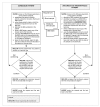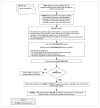Use of an identification system based on biometric data for patients requiring transfusions guarantees transfusion safety and traceability
- PMID: 19657483
- PMCID: PMC2719271
- DOI: 10.2450/2009.0067-08
Use of an identification system based on biometric data for patients requiring transfusions guarantees transfusion safety and traceability
Abstract
Background: One of the most serious risks of blood transfusions is an error in ABO blood group compatibility, which can cause a haemolytic transfusion reaction and, in the most severe cases, the death of the patient. The frequency and type of errors observed suggest that these are inevitable, in that mistakes are inherent to human nature, unless significant changes, including the use of computerised instruments, are made to procedures.
Methods: In order to identify patients who are candidates for the transfusion of blood components and to guarantee the traceability of the transfusion, the Securblood system (BBS srl) was introduced. This system records the various stages of the transfusion process, the health care workers involved and any immediate transfusion reactions. The patients and staff are identified by fingerprinting or a bar code. The system was implemented within Ragusa hospital in 16 operative units (ordinary wards, day hospital, operating theatres).
Results: In the period from August 2007 to July 2008, 7282 blood components were transfused within the hospital, of which 5606 (77%) using the Securblood system. Overall, 1777 patients were transfused. In this year of experience, no transfusion errors were recorded and each blood component was transfused to the right patient. We recorded 33 blocks of the terminals (involving 0.6% of the transfused blood components) which required the intervention of staff from the Service of Immunohaematology and Transfusion Medicine (SIMT). Most of the blocks were due to procedural errors.
Conclusions: The Securblood system guarantees complete traceability of the transfusion process outside the SIMT and eliminates the possibility of mistaken identification of patients or blood components. The use of fingerprinting to identify health care staff (nurses and doctors) and patients obliges the staff to carry out the identification procedures directly in the presence of the patient and guarantees the presence of the doctor at the start of the transfusion.
Keywords: Biometric identification; haemovigilance; traceability; transfusion safety.
Figures




References
-
- Miyata S, Kawai T, Yamamoto S, et al. Network computer-assisted transfusion-management system for accurate blood component-recipient identification at the bedside. Transfusion. 2004;44:364–72. - PubMed
-
- Murakami J. Present state of transfusion errors. Rinsho Byori. 2003;51:43–9. - PubMed
-
- Tsubaki K, Nagao A. Examination for prevent of blood transfusion errors. Rinsho Byori. 2003;51:146–9. - PubMed
-
- Ministero della Sanità. Commissione Tecnica sul Rischio Clinico (DM 5 marzo 2003): Sicurezza nell'uso del sangue. Risk management in sanità. Il problema degli errori. 2004:67–78.
MeSH terms
LinkOut - more resources
Full Text Sources
Miscellaneous
